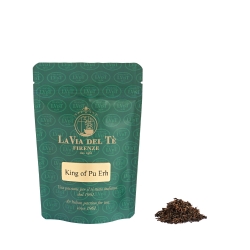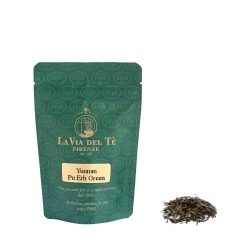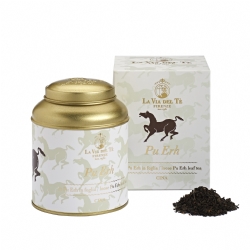
Pu erh Tea
Pu Erh is a tea that undergoes a microbial post-fermentation that gives it full earthy mellow flavours. It is an ancient tea from Xinshuanbanna County, in Yunnan.
From there, down the ancient caravan route of “tea and horses”, Pu Erh reached the neighbouring countries.
The Pu Erh tea bush is a particular variety called Da Yeh, which can be both cultivated and wild. Pu Erh is appreciated for its beneficial properties: it is considered a natural detox and an excellent after-meal tea.
It is believed to encourage weight loss, reduce cholesterol and aid circulation. Pu Erh tea has long been a national treasure in China, carefully regulated, and has for years been receiving increased interest outside their country of origin.
Pu Erh tea exists loose in leaves and compressed in blocks, discs and spheres; according to the processing methodology, Pu Erh could be Raw (namely Sheng - post-fermented naturally for many years, storing it in suitable environments, away from light) or Ripe (namely Shou- the post-fermentation is accelerated by exposure to moisture for a few months). As raw Pu Erh ages, it begins to develop unique characteristics in taste, aroma, and body.
The method for making Raw Pu Erh dates back to the Ming dynasty, while the Ripe method dates back to the 1970s.
The basic manufacturing steps are common to both types: an initial phase of pan frying to limit enzymatic oxidation, ('kill green'), followed by rolling and drying the leaves for several days in the sun. The tea obtained is called "maocha" and post-fermentation occurs in two ways: slowly, ageing the "maocha" for several years; or quickly "composting" the leaves in hot and humid conditions for several weeks.












